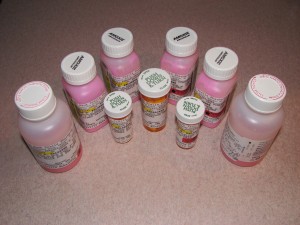More than two dozen American health organizations -- including the Centers for Disease Control and the American Academy of Pediatrics for starters -- are banding together to fight the overuse of antibiotics. In new research, Extending the Cure, a DC-based policy group aiming to reduce inappropriate use or antibiotics, found prescribing rates dropped 17 percent nationally -- and 24 percent here in California -- from 1999 to 2010.
For a refresher: remember that antibiotics fight bacterial infections; they are useless the common cold or influenza -- those are caused by viruses.
Those lower prescribing rates make a difference, not just in avoiding medicines that won't help you -- or could even hurt you. All drugs have side effects, after all. Reduced use of antibiotics means reduced creation of superbugs. "For many pathogens," said Ramanan Laxminarayan, director of Extending the Cure, "resistance rates are lower in California than other states."
In other words, avoiding that unnecessary antibiotic not only helps you, but it helps your community as a whole. There are regional variations. Laxminarayan says that western states tend to have less inappropriate use across the board, and many southern states tend to have higher rates. He says at least part of the explanation lies in the funding and sophistication of public health efforts.
"(It's) the same sort of thing that explains why there's high rates of obesity and smoking," he told me. "There's a clustering of behaviors that reflect less penetration of public health, perhaps poorer-funded public health departments. We don't know exactly why there's more antibiotic use in southern states, and it hasn't changed. That's troubling."
